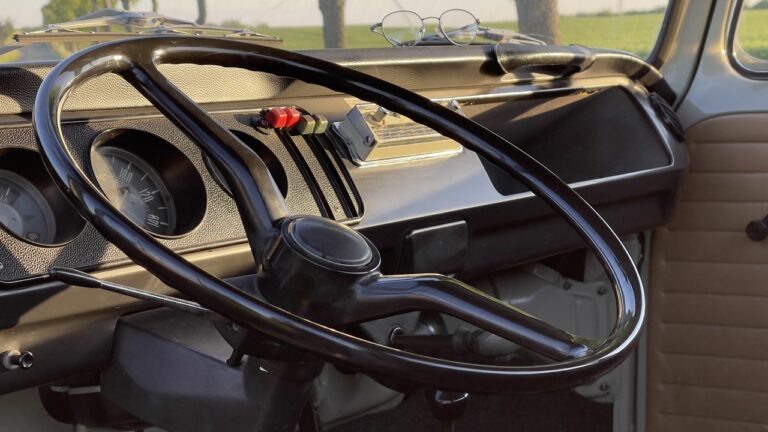The Papers: 'Two Years Of Torment Over' And Trump Declares 'Historic Dawn'
- The automotive industry faces a challenging recovery from the pandemic.
- Political decisions heavily influence automotive manufacturing and sales.
- Trade policies can directly affect vehicle pricing and availability.
- Consumer preferences are shifting towards electric and hybrid vehicles.
- Labor relations are crucial for maintaining a stable manufacturing environment.
- Environmental regulations are pushing automakers towards innovative solutions.
The automotive industry is undergoing significant transformations, influenced by various external factors, including political climates and consumer sentiments. In light of recent events, particularly surrounding former President Donald Trump’s statements and the ongoing issues faced by the industry, it is essential to delve deeper into the intersection of politics and the automotive sector. This article explores the implications of Trump’s declaration of a “historic dawn” in relation to the automotive landscape over the past two years, often characterized by turmoil and challenges.
The Current Landscape of the Automotive Industry
The automotive industry is currently navigating a complex landscape shaped by challenges such as supply chain disruptions, changing consumer preferences, and evolving environmental regulations. This environment has been further complicated by political discourse and decisions that impact manufacturing, trade, and consumer confidence.
Impact of Political Decisions on the Automotive Sector
Political decisions can significantly influence various aspects of the automotive industry, including tariffs, trade agreements, and environmental regulations. The recent political climate in the U.S. has raised questions about the future direction of the industry.
- Trade Policies: Tariffs on imported vehicles can raise costs for manufacturers and consumers.
- Environmental Regulations: Stricter regulations push automakers towards more sustainable practices.
- Incentives for Electric Vehicles: Government incentives can boost EV adoption and infrastructure.
- Labor Relations: Labor policies impact manufacturing costs and workforce stability.
Trump’s Statements and Their Implications
Former President Donald Trump recently declared a “historic dawn” in the context of economic recovery and growth. While his statements may resonate with certain factions, it is crucial to analyze the tangible effects on the automotive sector.
Economic Recovery and Automotive Sales
The recovery of the automotive market post-COVID-19 has been uneven. While certain segments are witnessing growth, others remain challenged by inventory shortages and fluctuating consumer demand.
Trump’s assertion of a “historic dawn” may reflect optimism, but actual sales figures tell a more nuanced story.
Key Takeaways
- The automotive industry faces a challenging recovery from the pandemic.
- Political decisions heavily influence automotive manufacturing and sales.
- Trade policies can directly affect vehicle pricing and availability.
- Consumer preferences are shifting towards electric and hybrid vehicles.
- Labor relations are crucial for maintaining a stable manufacturing environment.
- Environmental regulations are pushing automakers towards innovative solutions.
- Future growth depends on balancing consumer needs and regulatory demands.
Challenges Over the Last Two Years
The past two years have been marked by numerous challenges that have tested the resilience of the automotive industry. From pandemic-induced disruptions to changing consumer preferences, these factors have shaped the current market environment.
Supply Chain Disruptions
One of the most significant challenges has been supply chain disruptions, primarily caused by the COVID-19 pandemic. This has resulted in delays in production and delivery of vehicles.
Shifts in Consumer Preferences
As consumers become more environmentally conscious, there has been a notable shift towards electric vehicles (EVs) and hybrids. This change necessitates that automakers adapt quickly to meet evolving demands.
Labor Market Challenges
The automotive sector has also faced challenges related to labor shortages and negotiations. Strikes and labor disputes can halt production and impact sales.
Future Prospects for the Automotive Industry
Looking ahead, the automotive industry appears poised for transformation. With ongoing advancements in technology and a push towards sustainability, automakers are re-evaluating their strategies.
The Role of Electric Vehicles
Electric vehicles are expected to play a pivotal role in the future of the automotive market. Investments in EV technology and infrastructure will likely shape the direction of the industry.
Technological Innovations
Technological advancements, such as autonomous driving and connected vehicles, are also set to redefine the driving experience, making it essential for automakers to innovate continually.
FAQs
What does Trump’s “historic dawn” declaration mean for the automotive industry?
Trump’s declaration may suggest optimism for economic recovery, but the actual impact on the automotive sector requires careful analysis of sales and production trends.
How have supply chain issues affected vehicle availability?
Supply chain disruptions have led to inventory shortages, resulting in limited vehicle availability and longer wait times for consumers.
What trends are influencing consumer preferences in the automotive market?
There is a growing preference for electric and hybrid vehicles, driven by environmental concerns and government incentives.
Are labor relations a significant factor in automotive manufacturing?
Yes, labor relations play a crucial role in maintaining production efficiency and addressing workforce issues within the automotive sector.
What role do environmental regulations play in the automotive industry?
Environmental regulations push automakers to innovate and adopt sustainable practices, significantly influencing vehicle design and manufacturing processes.
Conclusion
The automotive industry stands at a crossroads, facing both challenges and opportunities in an evolving landscape. While political statements may offer a sense of optimism, the reality of market dynamics and consumer preferences will ultimately shape the future of the industry. As the sector continues to adapt to these changes, the focus must remain on innovation and sustainability to ensure long-term growth and stability.







